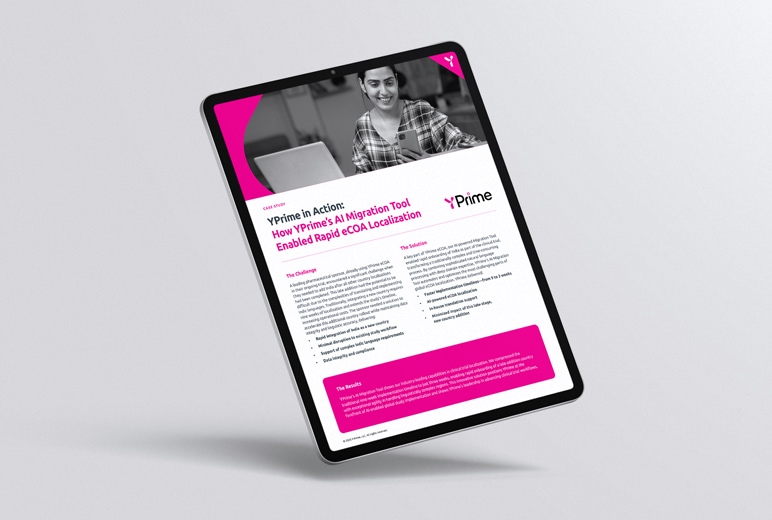Success in GLP-1 clinical trials requires a balanced approach that combines innovative strategies with careful attention to potential pitfalls. As sponsors navigate this growing pharmacological category, understanding what works—and what doesn’t—can make the difference between developing a competitive therapy and one that struggles to stand out in an increasingly crowded market. Here are five (5) essential strategies to implement and five (5) critical pitfalls to avoid in your GLP-1 clinical trials.
Strategies to Implement
1. For Weight Management, Design Holistic Studies that Capture the Full Impact
While GLP-1s show promise across multiple indications, weight management trials require comprehensive data collection beyond the scale. Design your studies to capture metabolic improvements, cardiovascular outcomes, and quality-of-life measures specifically related to weight loss. This holistic approach strengthens your regulatory submissions and provides valuable insights into how weight reduction impacts overall patient health.
2. Embrace Adaptive Trial Designs
The evolving GLP-1 landscape demands flexibility. Implement adaptive trial designs that allow protocol modifications based on interim data analysis. This approach can optimize patient recruitment, reduce trial duration, and improve resource allocation while maintaining scientific rigor.
3. Prioritize Extended Follow-Up Periods
Long-term efficacy and safety data are crucial for GLP-1 therapies. Build robust patient retention strategies into your trial design, including user-friendly eCOA solutions, regular engagement touchpoints, and streamlined data collection methods that minimize participant burden.
4. Integrate Real-World Evidence
Complement traditional trial endpoints with real-world evidence collection. This dual approach provides a more complete picture of your therapy’s effectiveness and can support both regulatory submissions and market access strategies.
5. Leverage Technology for Patient Engagement
Implement innovative solutions like Bluetooth-integrated monitoring devices and bring-your-own-device (BYOD) options. These technologies can improve data quality while enhancing the patient experience and compliance rates.
Pitfalls to Avoid
1. Underestimating Global Trial Complexity
Don’t overlook the challenges of running international GLP-1 trials. Language requirements, cultural considerations, and regulatory variations across regions require careful planning and standardized processes for successful execution.
2. Neglecting Data Integration Strategies
Avoid implementing disparate systems for different trial components. A fragmented approach to data collection and management can lead to inefficiencies, compliance issues, and delayed insights. Instead, prioritize integrated solutions that enable seamless data flow and analysis.
3. Overlooking Patient Diversity
GLP-1 therapies have broad applicability across different patient populations. Design your trials to include diverse participant groups that reflect your target market. This approach strengthens your data safety and efficacy while supporting future market access.
4. Rushing Technology Implementation
While technology can enhance trial efficiency, hasty implementation can disrupt operations. Take time to validate technical solutions, train staff, and establish backup procedures before full deployment.
5. Insufficient Site Support
Don’t underestimate the resources required to support clinical sites. Provide comprehensive training on eCOA systems, establish clear communication channels, and maintain regular engagement to ensure protocol adherence and data quality.
The Path Forward
The GLP-1 market’s remarkable trajectory, with projections reaching $157.5 billion by 2035,1 has created both opportunities and challenges for clinical development. With over 300 GLP-1 drugs in active development,2 success depends on thoughtful trial design and meticulous execution.
Remember that these strategies and pitfalls are interconnected. Your approach to each element should consider its impact on the whole development program. By maintaining this integrated perspective while implementing proven strategies and avoiding common pitfalls, you can optimize your GLP-1 clinical trials for success in this dynamic and competitive landscape.
At YPrime, we understand the challenges of GLP-1 clinical trials. That’s why we’ve created the GLP-1 eCOA Playbook—your essential guide to successfully leveraging eCOA in your studies. You can also explore YPrime’s glucometer functionality, which helps you optimize glucose monitoring, a common element of GLP-1 trials.
To learn more about YPrime eCOA, visit www.yprime.com/ecoa.
- Roots Analysis Business Research & Consulting, GLP-1 Market: Industry Trends and Global Forecasts. https://www.rootsanalysis.com/reports/glp-1-market.html. Accessed January 27, 2025.
- Clinical Trials Arena, 2024 was a record year for obesity trials and 2025 is already poised to take over. https://www.clinicaltrialsarena.com/analyst-comment/2024-record-year-obesity-trials-2025-poised-take-over/ Accessed January 27, 2025.
Check Out Our Other eCOA Resources
about trial design, data capture, operational efficiencies, and, ultimately, solving for certainty in clinical research.



